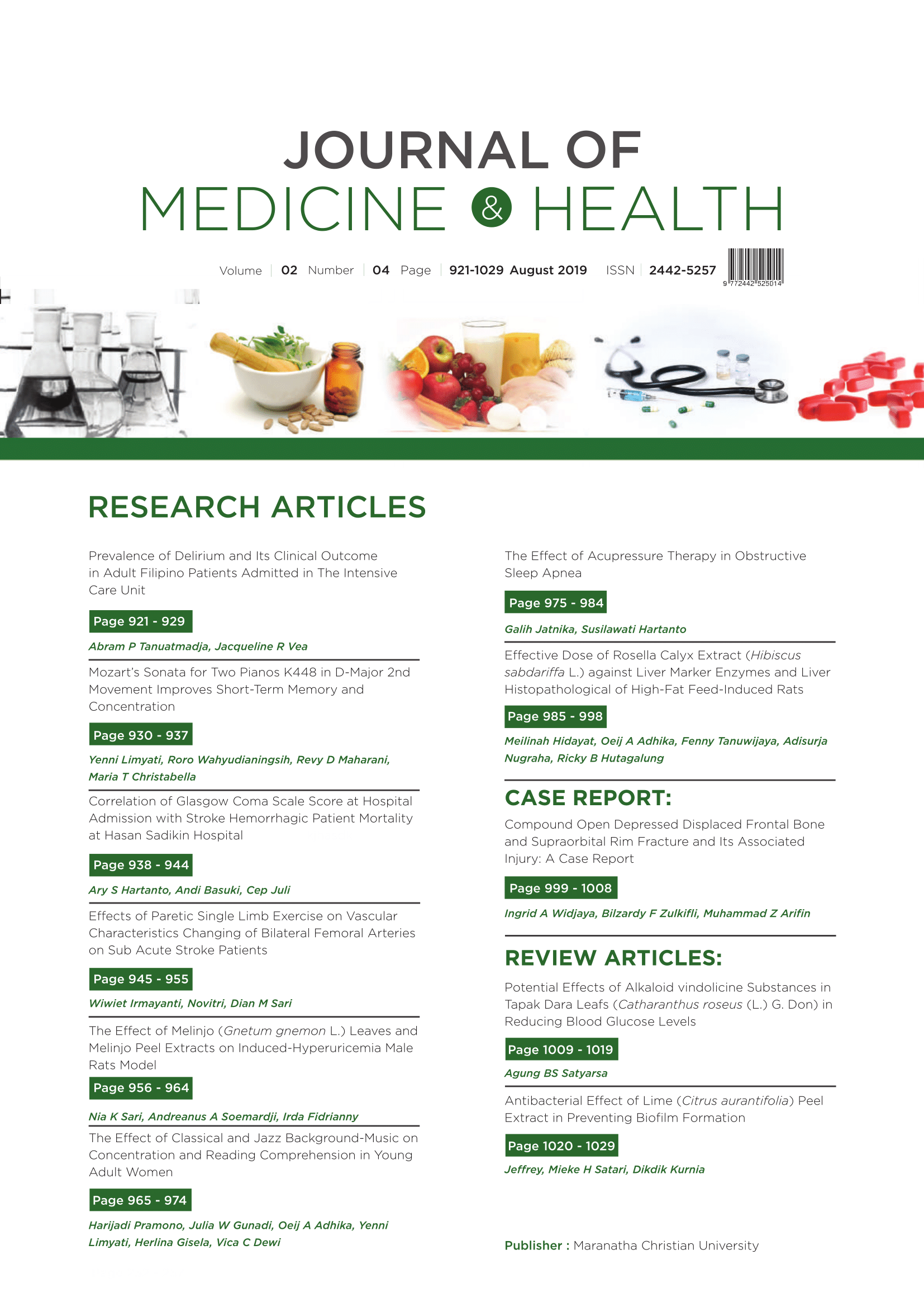Mozart’s Sonata for Two Pianos K448 in D-Major 2nd Movement Improves Short-Term Memory and Concentration
DOI:
https://doi.org/10.28932/jmh.v2i4.1127Abstract
Rhythm, melody, and high frequencies in Mozart’s music are capable to stimulate creativity and motivation regions of the brain and activate brain’s areas, especially the prefrontal area of the brain, which contributes to short-term memory. Listening to Mozart ‘s music can enhance concentration because it stimulates alpha brain waves which induce relaxation and peaceful mood. The objectives of this study were to determine the Mozart’s effect towards short-term memory and concentration. This is a quasi-experimental study using pre- and post-test design, performed to 30 adult women aged between 19-24 years old. The measured data were memorized words from recall memory test and duration to finish traffic jam puzzle, before and after listening to Mozart Sonata K448 for Two Pianos in D-major 2nd Movement. Data were analyzed using paired t-test with ? = 0.05.The results showed that there is a significant difference of words remembered before and after listening to music (35,43±6,70444 vs 73±4,727; p<0,01) and duration to finish traffic jam puzzle (125,60±149,939vs 53,67±69,652 seconds ; p<0,01). We concluded that Mozart’s music improves short-term memory and concentration. Keywords: Mozart’s sonata, short-term memory,concentrationDownloads
Download data is not yet available.
Downloads
Published
2019-08-27
How to Cite
1.
Limyati Y, Wahyudianingsih R, Maharani RD, Christabella MT. Mozart’s Sonata for Two Pianos K448 in D-Major 2nd Movement Improves Short-Term Memory and Concentration. J. Med. Health [Internet]. 2019Aug.27 [cited 2026Jan.2];2(4). Available from: http://114.7.153.31/index.php/jmh/article/view/1127
Issue
Section
Articles
License
Authors who publish with this journal agree to the following terms:
- Authors retain the copyright and grant the journal right of first publication with the work
simultaneously licensed under a Creative Commons Attribution-NonCommercial 4.0 International License that allows others to share the work with an acknowledgement of the work's authorship and initial publication in this journal. - Authors are able to enter into separate, additional contractual arrangements for the nonexclusive distribution of the journal's published version of the work (e.g., post it to an institutional repository or publish it in a book), with an acknowledgement of its initial publication in this journal.
 This work is licensed under a Creative Commons Attribution-NonCommercial 4.0 International License.
This work is licensed under a Creative Commons Attribution-NonCommercial 4.0 International License.

















